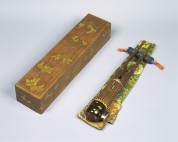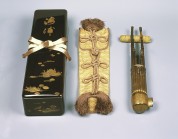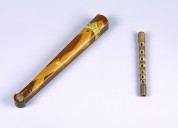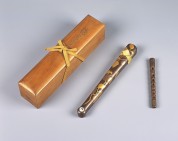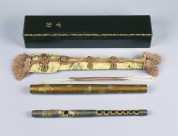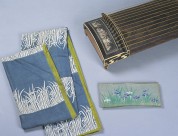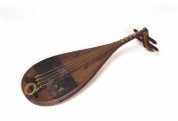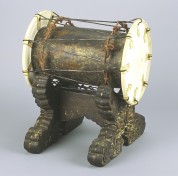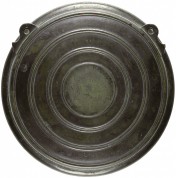Collection
Gagaku Instrument: Sō, Named “Sanwa”
| Gagaku Instrument: Sō, Named “Sanwa” |
| Length 180.3 cm; Kamakura period, 13th century; Gift of the Ii Family |
The sō is a thirteen-stringed zither introduced from China. This old example dates from the Kamakura period, and was made by Raison (b. 1186), a priest of Chōgosonshiji Temple in Nara and a well-known maker of shō. Although sō were commonly made of paulownia wood, this example appears to use cedar, which provides clues to the materials used in early sō production. An inscription on the back of the instrument reads: “In spare moments between religious services, I made this in three months. Hoping it will produce a harmonious melody, I name it ‘three harmonies’ (sanwa).” “Three harmonies” refers to the Buddhist idea of the elements of consciousness (“root,” “boundary,” “awareness”).


